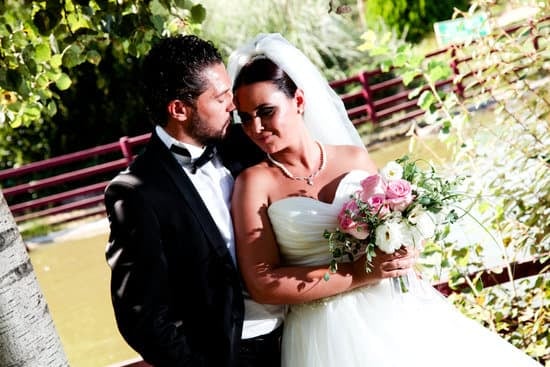When is the unity ceremony in a wedding? The unity ceremony holds a significant place in many wedding ceremonies, symbolizing the coming together of two individuals and their families. This tradition, with its cultural and historical roots, has evolved over time to include various types and personalized touches. Understanding the significance and traditional timing of the unity ceremony can help couples decide how to incorporate this ritual into their own weddings.
The unity ceremony has deep cultural and symbolic significance in many wedding traditions. From ancient rituals to modern interpretations, this meaningful act represents the unity of marriage, the blending of two lives, and the creation of a new family. Understanding the history and symbolism behind these ceremonies can provide insight into why they continue to hold such importance in weddings around the world.
There are various types of unity ceremonies that couples can choose from when planning their wedding. Whether it involves lighting a unity candle, blending colored sands, or tying knots with hand fastening, each type offers its own unique symbolism and beauty. The decision on which type of unity ceremony to include often reflects the couple’s personal beliefs, values, and cultural backgrounds. Understanding these options can help couples personalize their weddings to reflect their love story.
History of the Unity Ceremony
The unity ceremony, a tradition that holds great significance in wedding ceremonies, has roots in various cultural and religious traditions from around the world. One of the most widely recognized unity ceremonies is the lighting of the unity candle, which symbolizes the merging of two individuals into one unified partnership. This tradition has roots in Christianity and is often included in Christian wedding ceremonies.
In addition to the unity candle, other cultures have their own unique unity ceremonies. For example, hand fasting is a traditional Celtic ritual where the couple’s hands are bound together with ribbons or cords to symbolize their union and commitment to each other. In Hindu weddings, there is a ritual known as Saptapadi, where the couple takes seven steps together to symbolize their journey through life as partners.
The cultural origins of these unity ceremonies demonstrate the universal desire for couples to express their commitment and love for each other in a symbolic way. As weddings continue to embrace diversity and inclusivity, couples have begun incorporating these various unity ceremonies into their weddings as a way to honor their heritage and share their unique love story with family and friends.
| Unity Ceremony Type | Cultural Origin |
|---|---|
| Unity Candle | Christianity |
| Hand Fasting | Celtic |
| Saptapadi | Hinduism |
Types of Unity Ceremonies
When it comes to planning a wedding, incorporating a unity ceremony can add a beautiful and symbolic touch to the celebration. There are several different types of unity ceremonies that couples can choose from, each with its own cultural and personal significance. From candle lighting to sand blending, hand fasting, and tree planting, these rituals offer a meaningful way for couples to symbolize their union during the wedding ceremony.
Candle Lighting
One popular type of unity ceremony is the candle lighting ritual. During this ceremony, the couple typically lights two individual candles before using them to light a larger, central candle together. This act symbolizes the merging of two lives into one and signifies the couple’s commitment to each other.
Sand Blending
Another common unity ceremony is the sand blending ritual. In this tradition, each partner has different colored sand, which they pour into a single container, creating a layered effect. The resulting sand art serves as a visual representation of the coming together of two individuals in marriage.
Hand Fasting
Hand fasting is an ancient Celtic ritual that involves binding the couple’s hands together with cord or ribbon as a symbol of their commitment and connection. This tradition has seen a resurgence in popularity in modern weddings as couples seek to incorporate meaningful customs into their ceremonies.
Tree Planting
For nature-loving couples, tree planting can be a unique and eco-friendly unity ceremony option. During this ritual, partners plant a tree together to represent their growing love and commitment, with the hope that it will continue to flourish just like their relationship.
These different types of unity ceremonies provide couples with diverse choices for expressing their love and commitment during their wedding day. Regardless of which type they choose, each ritual offers an opportunity for couples to create lasting memories and deepen the symbolism of their union.
When the Unity Ceremony Takes Place
The unity ceremony is a significant part of many wedding traditions, symbolizing the coming together of two individuals to form a new and unified family. Understanding when the unity ceremony takes place within the wedding timeline is important for couples who want to incorporate this tradition into their special day.
Before or After Vows
The timing of the unity ceremony can vary depending on cultural and personal preferences. In some traditions, the unity ceremony takes place after the exchange of vows, serving as a visual representation of the couple’s commitment to each other. In other cases, it may occur before the vows as a way to kick off the ceremonial proceedings and set the tone for the rest of the wedding ceremony.
During Specific Segment
In some weddings, especially those with religious or cultural ceremonies, there may be a specific segment designated for the unity ceremony. For example, in a Christian wedding, the unity ceremony might take place after the reading of scriptures or before the pronouncement of marriage by an officiant. Understanding these traditional segments can help couples determine when to incorporate their chosen unity ritual into their wedding.
Other Considerations
While there are common placements for the unity ceremony within a wedding timeline, couples should also consider their specific needs and desires for their special day. Some may choose to position it at a specific moment that holds personal significance for them, such as during a specific song or at sunset. Ultimately, when considering when to hold your unity ceremony in your wedding, it’s essential to think about what feels right and meaningful for you as a couple.
Incorporating the Unity Ceremony Into Your Wedding
When incorporating a unity ceremony into your wedding, it’s important to consider the timing and placement within the overall flow of your ceremony. Here are some tips and ideas for seamlessly integrating this meaningful tradition into your special day:
- Consider the traditional placement: The unity ceremony typically takes place after the exchange of vows and rings, symbolizing the joining of two individuals into one unified partnership. This can serve as a powerful and poignant moment within your ceremony, marking the transition from separate individuals to a united couple.
- Choose a meaningful ritual: There are various types of unity ceremonies to choose from, each with its own symbolism and significance. Whether you opt for a candle lighting, sand blending, hand fasting, or tree planting ceremony, select a ritual that resonates with both you and your partner. This will add depth and personal meaning to the moment.
- Involve loved ones: Incorporating family members or friends into the unity ceremony can further reinforce the idea of coming together in unity. For example, parents may be invited to participate by lighting candles or adding elements to a sand ceremony. This inclusion can emphasize the joining not only of two individuals but also of their respective families.
- Infuse personal touches: Personalizing your unity ceremony can make it even more special. Consider using handmade candles, selecting unique vessel for sand blending, or choosing symbolic colors that hold meaning for you as a couple. Additionally, you may want to incorporate music or readings that hold significance for you both.
By considering these tips and ideas, couples can ensure that their unity ceremony is seamlessly integrated into their wedding day in a way that is deeply meaningful and reflective of their unique love story.
Symbolism of the Unity Ceremony
When it comes to understanding the significance of the unity ceremony in a wedding, it is important to explore the symbolism behind this tradition. The unity ceremony typically represents the joining together of two individuals into one partnership, symbolizing their commitment to each other and the merging of their lives. This act serves as a powerful visual representation of their union and dedication to one another as they embark on their journey together as a married couple.
One common example of symbolism within a unity ceremony is the lighting of a unity candle. The individual candles represent the bride and groom as separate individuals, while the act of using those flames to light a single candle signifies the coming together as one unit. This not only reflects the couple’s commitment to each other, but also acknowledges that their individual lives will now become intertwined as they move forward in marriage.
Another example is the blending of colored sand or liquids from separate containers into a single vessel. This act represents the intertwining and mixing of two individual lives into one harmonious union. The resulting piece of art created from this blending is often kept by the couple as a symbol of their unity and can serve as a lasting reminder of their special day.
Incorporating these symbolic gestures into a wedding allows couples to publicly demonstrate their commitment to each other while creating lasting memories that hold deep personal significance. Whether through candles, sand blending, or another symbolic act, the unity ceremony provides couples with an opportunity to express their love and dedication for all to see.
| Symbolism | Unity Ceremony |
|---|---|
| Coming together as one unit | Lighting a unity candle |
| Intertwining and mixing two individual lives | Blending colored sand or liquids |
Personalizing the Unity Ceremony
When it comes to personalizing the unity ceremony in a wedding, there are countless ways to make this tradition unique and reflective of the couple’s beliefs and values. Whether incorporating cultural elements, religious symbols, or simply adding a personal touch, the unity ceremony provides an opportunity for couples to showcase their individuality and create a memorable moment during their special day.
There are various ways to personalize the unity ceremony, and one option is to incorporate cultural elements that hold significance for the couple. For example, some couples may choose to include traditional rituals or customs from their cultural backgrounds as part of the unity ceremony. This could involve incorporating specific items, gestures, or prayers that symbolize unity and love within their heritage.
Another way to personalize the unity ceremony is by including religious symbols or traditions that hold meaning for the couple. Whether it’s a reading from a sacred text, a prayer or blessing from a religious leader, or the use of symbolic objects representing faith and spirituality, integrating religious elements into the unity ceremony can add depth and significance for couples who share similar beliefs.
Additionally, many couples choose to add a personal touch to their unity ceremony by incorporating elements that represent their unique relationship and shared values. This could involve using meaningful objects such as heirlooms or sentimental items, writing personalized vows or promises to each other, or even creating a custom ritual that reflects their shared interests and ideals.
Whatever route they choose, personalizing the unity ceremony allows couples to create a symbolic representation of their love and commitment in a way that feels authentic and meaningful to them.
- Incorporate cultural traditions
- Include religious symbols
- Add personal touches related to your relationship
Modern Alternatives to the Unity Ceremony
In conclusion, the unity ceremony holds a special significance in weddings across various cultures and traditions. Whether it be through candle lighting, sand blending, hand fasting, or tree planting, the unity ceremony symbolizes the coming together of two individuals to form a new union. It is a beautiful way to symbolize the couple’s commitment to each other and their journey together as partners.
While the traditional unity ceremonies continue to hold value for many couples, there has been a growing trend towards modern alternatives that offer a unique twist on this age-old tradition. Couples are now exploring non-traditional unity ceremony ideas that reflect their personalities and values, such as wine blending, puzzle assembling, or even painting together. These modern alternatives provide an opportunity for couples to personalize their unity ceremony and make it truly unique to them.
Incorporating a unity ceremony into your wedding can be a meaningful and memorable part of your special day. Whether you choose to stick with a traditional unity ceremony or opt for a modern alternative, the symbolism behind this ritual remains the same – it represents the coming together of two individuals in love and commitment.
Ultimately, when the unity ceremony takes place in a wedding is up to the couple and their desires for how they want to express their union on their big day.

I have been involved in marriages for over 20 years helping couples and singles understand more about them.





